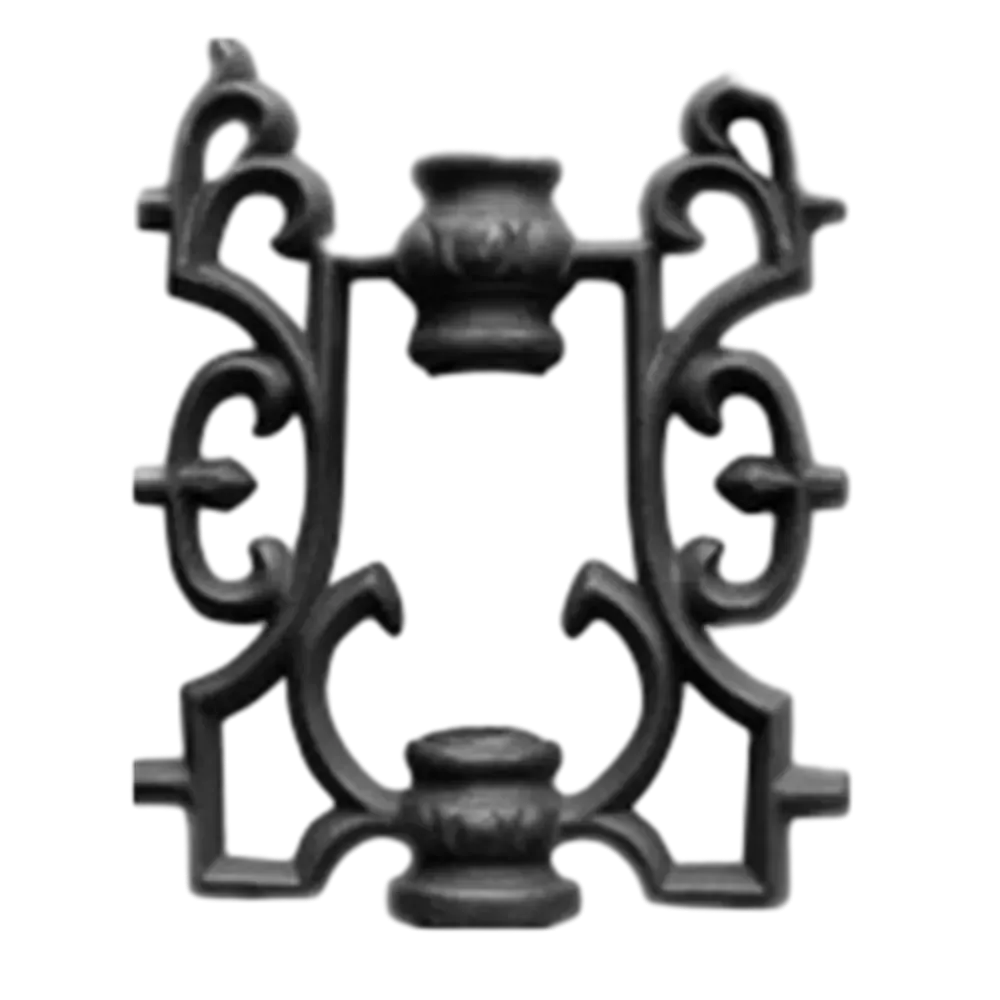cast iron ornamental pieces
The Art of Cast Iron Ornamental Pieces
Cast iron ornamental pieces hold a significant place in both architectural design and decorative art, marrying functionality with aesthetic appeal. These creations, which range from intricate railings and gates to elaborate decorative hardware and sculptures, showcase the timeless qualities of cast iron while reflecting the skills of the artisans who create them.
The history of cast iron dates back to ancient China, but it gained immense popularity during the Industrial Revolution in the 18th and 19th centuries. As cities expanded and industrial capabilities improved, cast iron became a preferred material for both construction and decorative elements. Its strength, durability, and ability to be cast into intricate shapes made it ideal for ornamental applications.
One of the most iconic uses of cast iron is in architecture. It can be seen prominently in the form of railings, balconies, and gate designs that adorn historic buildings and public spaces. These ironworks often feature elaborate scrollwork, floral motifs, and geometric patterns, demonstrating the high level of craftsmanship involved. Each piece tells a story of the era in which it was made, serving as a window into the past while continuing to enhance the modern landscape.
Moreover, cast iron ornamental pieces are not merely confined to external architecture; they also find a place in interior design. From decorative fireplace mantels to door knockers, the versatility of cast iron allows it to create a sense of old-world charm and unique character in contemporary homes. Interior designers often incorporate these pieces to add historical context and a rustic touch, blending them seamlessly into modern aesthetics.
cast iron ornamental pieces

The process of creating cast iron decorative pieces is an art form in itself. It begins with artisans creating a pattern, which is then used to make a mold. Molten iron is poured into these molds, where it cools and solidifies, taking on the intricate designs crafted by the artist. This method has remained largely unchanged over the centuries, a testament to the timeless nature of the material and the skill involved.
In addition to their beauty, cast iron ornamental pieces are also highly durable, capable of withstanding the test of time and the elements. Unlike many contemporary materials, which may fade or deteriorate, cast iron can maintain its exquisite appearance for decades, if not centuries, with proper care. The natural patina that develops over time adds to its charm and character, making each piece unique.
In recent years, there has been a resurgence of interest in cast iron ornamental pieces. As people seek to create more environmentally friendly and historically inspired designs, cast iron's sustainable qualities and rich heritage make it a popular choice. Preservation efforts are also underway to restore and maintain historical cast iron works, ensuring that future generations can appreciate the artistry and craftsmanship that these pieces embody.
In conclusion, cast iron ornamental pieces are more than just decorative items; they are a celebration of artistry, history, and durability. Whether enhancing the grandeur of a historic building or adding character to a modern home, these pieces continue to play a vital role in our architectural and decorative landscape, ensuring that the legacy of cast iron artistry endures.
-
Wrought Iron Components: Timeless Elegance and Structural StrengthNewsJul.28,2025
-
Window Hardware Essentials: Rollers, Handles, and Locking SolutionsNewsJul.28,2025
-
Small Agricultural Processing Machines: Corn Threshers, Cassava Chippers, Grain Peelers & Chaff CuttersNewsJul.28,2025
-
Sliding Rollers: Smooth, Silent, and Built to LastNewsJul.28,2025
-
Cast Iron Stoves: Timeless Heating with Modern EfficiencyNewsJul.28,2025
-
Cast Iron Pipe and Fitting: Durable, Fire-Resistant Solutions for Plumbing and DrainageNewsJul.28,2025
-
 Wrought Iron Components: Timeless Elegance and Structural StrengthJul-28-2025Wrought Iron Components: Timeless Elegance and Structural Strength
Wrought Iron Components: Timeless Elegance and Structural StrengthJul-28-2025Wrought Iron Components: Timeless Elegance and Structural Strength -
 Window Hardware Essentials: Rollers, Handles, and Locking SolutionsJul-28-2025Window Hardware Essentials: Rollers, Handles, and Locking Solutions
Window Hardware Essentials: Rollers, Handles, and Locking SolutionsJul-28-2025Window Hardware Essentials: Rollers, Handles, and Locking Solutions -
 Small Agricultural Processing Machines: Corn Threshers, Cassava Chippers, Grain Peelers & Chaff CuttersJul-28-2025Small Agricultural Processing Machines: Corn Threshers, Cassava Chippers, Grain Peelers & Chaff Cutters
Small Agricultural Processing Machines: Corn Threshers, Cassava Chippers, Grain Peelers & Chaff CuttersJul-28-2025Small Agricultural Processing Machines: Corn Threshers, Cassava Chippers, Grain Peelers & Chaff Cutters












